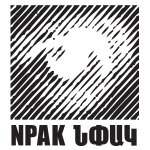The air needed for natural survival of contemporary art requires unrelenting participation of “Art-production” and “Art-action” in the public sphere forming man’s social and individual life.
Development and adoption of intellectual and practical aspects of art takes place concurrent and simultaneous with torrent of actual implementations. Dynamism of this surge creates the myth of continuously self-destructing contemporary art, by simultaneously bestowing upon the latter performing all of the roles in-between “super-imperatives” and “consumed molds”.
The issue of “Transitional Hypotheses” is following this inevitable course, while being its participant. National and geographic spread of the participants and their works allow examination of existing intentions and tendencies in contemporary art, both, as individual hypothesis as well as a language or writing style, concurrent with on-going drama of art.
As how much can we consider this drama encompassing in terms of artists working in various geographic and social spaces and bearing different cultural and historic background, is debatable. But is there another means of understanding overall destiny of contemporary art in different variations, instead of presenting this very art in contemporary art galleries and open spaces?
The viewer, by willingly or unwillingly standing in front of open spaces of such artistic fields is certainly going to try to consider this co-existence a reality, as well as notice the intentions by which the curators of the exhibition have been guided.
In this case the most substantial intention is correlating natural courses of the present day contemporary Japanese and Armenian arts. These relations also benefit from participation of artists of a third space, who nonetheless are part of these two artistic environments.
Curator : Ara Haitayan


